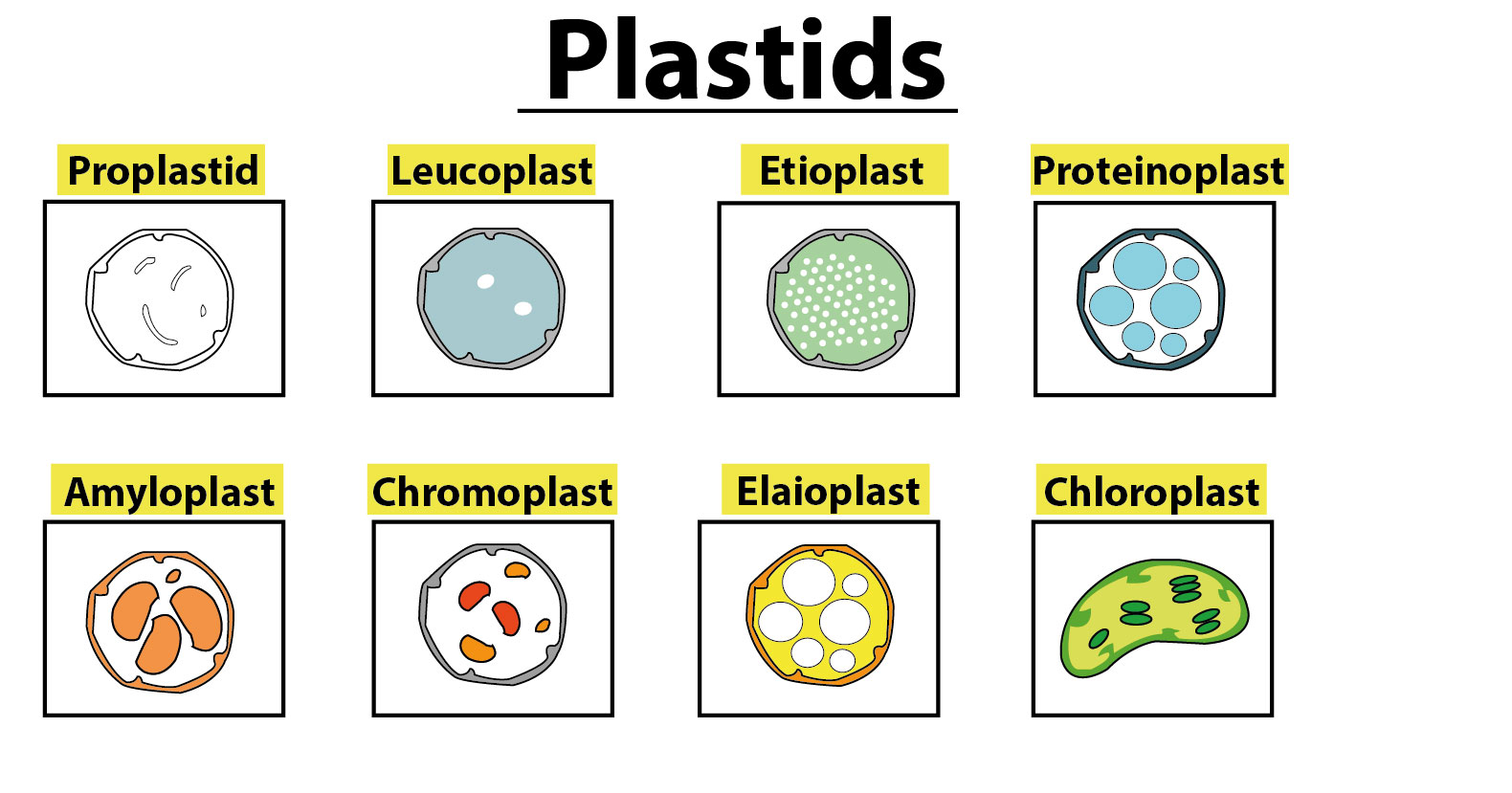Discover the Dynamic World of Plastids
Imagine a bustling factory within every plant cell where specialised workers convert sunlight into energy and store vital nutrients. Plastids, the double-membrane organelles found in plant cells, serve as these essential factories. From photosynthesis in chloroplasts to pigment production in chromoplasts, plastids play diverse roles that keep plants thriving. In this engaging guide, we explore what are plastids, their structure, various types, and their functions in plant cells. With surprising facts and interactive elements, you'll gain a deeper understanding of these fascinating organelles and their impact on both plant biology and everyday life.
Understanding Plastids: Definition and Function
Plastids definition: Plastids are specialised, double-membrane organelles in plant cells responsible for manufacturing and storing food, pigments, and other vital compounds. They are crucial for processes like photosynthesis and nutrient storage, making them indispensable for plant survival.
What is plastids?
Plastids are organelles that contribute to key cellular functions, such as converting sunlight to energy (in chloroplasts) and storing compounds (in leucoplasts).
Function of plastids:
Photosynthesis: Chloroplasts capture light energy and transform it into chemical energy.
Pigment Storage: Chromoplasts store pigments that lend leaves, flowers, and fruits their vibrant colours.
Nutrient Storage: Leucoplasts store starches, proteins, and lipids, ensuring plants have the energy and building blocks they need.
Types of Plastids and Their Specialisations
Types of plastids vary based on the presence of pigments and their developmental stages. The main types include:

Chloroplasts
Structure of plastids: Chloroplasts are biconvex, semi-porous, double-membrane organelles located mainly in the mesophyll of plant cells.
Role: They are the primary sites for photosynthesis, converting light energy into sugars.
Chromoplasts
Plastids in plant cells: Chromoplasts, found in flowers, ageing leaves, and fruits, store carotenoid pigments.
Significance: They provide the bright colours necessary for attracting pollinators and enhancing visual appeal.
Gerontoplasts
Transition Role: Gerontoplasts are ageing chloroplasts that transition as the leaf's photosynthetic activity declines, especially during autumn.
Leucoplasts
Non-Pigmented Organelles: These are colourless plastids found in non-photosynthetic tissues like roots.
Subtypes:
Amyloplasts: Specialised in storing and synthesising starch.
Proteinoplasts: Involved in the storage of proteins, often found in seeds.
Elaioplasts: Dedicated to the storage of fats and oils.
Students can also read out detailed article on the Difference between mitochondria and plastids to understand the concept better.
- Inheritance and the Uniparental Trait
Plastids are inherited uniparentally. In angiosperms, plastids are passed on through the female gamete, while in many gymnosperms, the male pollen is the source. This unique mode of inheritance underscores the critical role of plastids in plant development and evolution.
Test your Knowledge on Plastids!
Take this short quiz and then “Check your answers” to see how well you understand plastids.
Question: What are plastids primarily responsible for in plant cells?
Question: Name the type of plastid that is essential for photosynthesis.
Question: Which plastid is known for storing pigments that give fruits and flowers their colour?
Question: What is the function of leucoplasts in non-photosynthetic parts of the plant?
Question: How are plastids generally inherited in angiosperms?
Check Your Answers:
Manufacturing and storing food, pigments, and other compounds.
Chloroplasts.
Chromoplasts.
They store starch, proteins, or lipids.
Through the female gamete (uniparental inheritance).
Fun Facts about Plastids
Fact 1: Despite being small, plastids can transform into different forms (e.g., chloroplasts converting into chromoplasts) as plants mature.
Fact 2: Plastids contain their own DNA, highlighting their evolutionary history as once free-living organisms.
Fact 3: The vibrant colours of autumn leaves are partly due to the transformation of chloroplasts into gerontoplasts.
Real-World Applications
Plastids are not just academic curiosities—they have real-world significance:
Agriculture: Understanding plastids helps in developing crops with enhanced nutritional qualities and improved stress resistance.
Biotechnology: Manipulating plastid functions is a key strategy in producing biofuels and biopharmaceuticals.
Horticulture: The role of chromoplasts in colour production is exploited to breed visually appealing fruits and ornamental plants.


FAQs on Plastids: Structure, Types & Functions in Plant Cells
1. What are plastids?
Plastids are double-membrane organelles in plant cells responsible for processes such as photosynthesis, pigment storage, and nutrient storage.
2. What is plastids diagram?
It is a labelled illustration showing the structure of plastids, including the double membranes and internal compartments.
3. What are plastids in plant cell?
They are essential organelles found in plant cells that perform functions like converting sunlight into energy and storing important compounds.
4. What is the function of plastids?
Their functions include photosynthesis (in chloroplasts), pigment synthesis (in chromoplasts), and storage of starch, proteins, or lipids (in leucoplasts).
5. What are the types of plastids?
The main types are chloroplasts, chromoplasts, gerontoplasts, and leucoplasts (with subtypes amyloplasts, proteinoplasts, and elaioplasts).
6. What is the structure of plastids?
Plastids have a double membrane, and in some types, internal thylakoid structures that aid in their specific functions.
7. How does the diagram of plastids help in understanding their function?
A diagram of plastids visually represents their components, making it easier to understand how each part contributes to their overall function.
8. What is plastids definition?
Plastids are defined as specialised organelles found in plants and algae that are involved in photosynthesis, pigment production, and storage.
9. How are plastids inherited in plants?
Plastids are typically inherited uniparentally; angiosperms inherit them from the female gamete, while gymnosperms may inherit them from the male pollen.
10. Why are plastids important in plant cells?
They are crucial because they not only drive photosynthesis but also contribute to plant development, colouration, and storage of essential nutrients










